In 1770 The first instrumental meteorological observations at the Vilnius University Astronomical Observatory
In 1810, 1811 The first water level observations are launched in Rusnė, Smalininkai, Tilžė, Sieliai
1869-1897 the first meteorological stations are established
In 1921 Central Meteorological Station is established (assumed to be The year of LHMS’ foundation)
In 1923 The Hydrometric Party is founded
In 1925 The Bureau of Meteorology is set up
In 1926 Permanent Hydrometric Laboratory established in Kaunas
In 1926 The first meteorological bulletin with weather forecasts is published
In 1927 The Measurement Instrument Verification Group is established at the Bureau of Meteorology
In 1929 Phenological observations start at meteorological stations
In 1930 The Hydrometric Bureau is set up
In 1938 the Institute of Climatology is established
In 1941 The Lithuanian Hydrometeorological Service Board is established
In 1944 The Weather Bureau is set up
In 1945 Establishment of the Civil Aviation Meteorological Station
In 1945 Atmospheric radiosonde monitoring is launched at Kaunas Meteorological Station
In 1949 The Hydrometeorological Bureau is established in Klaipėda (since 1962 – observatory)
In 1952 Actinometric (solar radiation) measurements begin
In 1953 agro-meteorological observations are carried out and agro-meteorological forecasts are published
In 1964 Investigations into pollution in rivers and lakes are launched
In 1974 A meteorological radar station becomes operational
In 1978 Kaunas Hydrometeorological Observatory is established
In 1980 The Centre for Research and Control of Contamination of the Natural Environment is established
In 1983 Vilnius Hydrometeorological Centre is established
In 1992 Lithuania becomes a member of the World Meteorological Organisation
In 1993 Total ozone measurements start
In 1996 The Lithuanian Hydrometeorological Service Board is renamed the Lithuanian Hydrometeorological Service (LHMS)
In 1997 Automation of water metering stations launched
In 1997 Metrology Laboratory established at LHMS, covering verification/calibration of meteorological and hydrological instruments, accredited in 1999. by certificate LST EN 45001
In 2000 the agro-meteorological observation network is abolished
In 2000 Meteorological radar station closed
In 2000 Measurements of ultraviolet solar radiation and complex observations of solar radiation parameters in Kaunas and Šilutė
In 2001 Establishment of the Aeronautical Meteorology Centre
In 2001 Upper air soundings are discontinued
In 2002 Re-accredited Metrology Laboratory (compliant with LST EN ISO/IEC 17025)
In 2002 Automated meteorological observations at Palanga Airport
In 2003 Automated meteorological observations at Vilnius Airport
In 2003 phenological observations are continued
In 2003 resumption of atmospheric radiosonde monitoring in Kaunas (every other night)
In 2006 HIRLAM, a high-resolution weather forecasting model, is installed
In 2006 a quality management system compliant with ISO 9001:2008
In 2006 Re-accredited Metrology Laboratory (compliant with LST EN ISO/IEC 17025:2005)
In 2006 Lithuania becomes a cooperating member of the European Centre for Medium-Range Weather Forecasts (ECMWF)
In 2007 LHMS appointed as provider of meteorological services for air navigation
In 2007 The first automatic weather stations are set up
In 2009 an agro-meteorological measurement network is set up
In 2010 Automated meteorological observations at Kaunas Airport
In 2010 Laukuvos weather radar information becomes available
In 2010 upgraded numerical weather prediction equipment
In 2011 an early warning system for natural disasters is installed
In 2013 1-hourly frequency meteorological data from automated weather stations (after the comparison period) are started to be used operationally
In 2013 Lightning Discharge Detection System is installed
In 2013 The Satellite Air Navigation Information Receiving and Dissemination System (SADIS) is installed at the Aeronautical Meteorology Centre
In 2013 HARMONIE numerical weather prediction model information (beta version) added to the LHMS website
In 2013 Joining the Northern European Network of Weather Radars (NORDRAD)
In 2014 Lithuania becomes a member of the European Organisation for the Exploitation of Meteorological Satellites (EUMETSAT)
In 2014 Joining to the Lightning Detection Data Exchange Network (EUCLID)
In 2015 Upper air soundings are discontinued
In 2015 Vilnius weather radar information becomes available
In 2015 MIKE11 digital hydrological model installed
In 2015 Agreement with the Swedish Meteorological Institute (SMHI) on access to European Flood Alert System (EFAS) data
In 2016 Agreement for enhanced cooperation between the Nordic and Baltic countries (NORDMET)
In 2017 HARMONIE, a high-resolution weather forecasting model, is installed
In 2018 Expanding the network of automatic weather stations
In 2018 manual ozonometric observations are discontinued and ozone is measured with an automatic spectrophotometer (Brewer MK III)
In 2019 Re-accredited Metrology Laboratory of the Technical Division of Measurement (compliant with LST EN ISO/IEC 17025:2018)
In 2019 optimisation of meteorological stations (9 semi-automated meteorological stations for observations, the rest are fully automated)
In 2020 Solar ultraviolet radiation measurements stop in Palanga and start in Vėžaičiai
In 2020 Upgrading of a fully automated solar radiation system measuring 5 solar radiation parameters in Kaunas and Šilutė
In 2021 LHMT has implemented a quality management system compliant with ISO 9001:2015
In 2021 accredited Metrology Laboratory of the Measurement Quality and Technical Division in accordance with two ISO standards (compliant with LST EN ISO/IEC 17025:2018 and LST EN ISO/IEC 17020:2012)
In 2021 An extended network of measurements of total solar radiation. Automatic pyranometers installed in Dotnuva, Lazdijai, Utena and Vilnius
In 2021 Atmospheric radiosonde sounding resumed in Kaunas (nightly)
In 2021 lightning detection system expanded to include a fourth sensor
In 2021 Extension of the meteorological observation network in the coastal zone
2021-2022 the renewal of the meteorological observation network leads to the abolition of agro-meteorological stations and the establishment of automated meteorological stations at the same locations
In 2022 Almost all automatic weather stations are equipped with automatic air temperature sensors at a height of 5 cm (for frost monitoring)
2022-2023 Laukuvos and Vilnius weather radars upgraded
2022-2023 updating the forecasting system
2022-2023 semi-automatic meteorological element measurement systems are upgraded at Palanga, Vilnius and Kaunas airports
2022-2023 meteorological data access via API is enabled
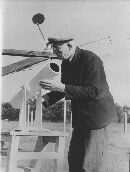
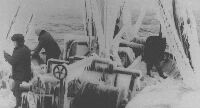
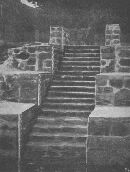
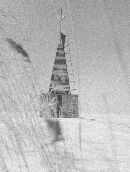
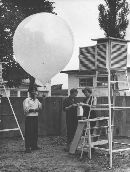
Lithuanian meteorology dates back to the first measurements of air temperature in 1770 at Vilnius University under the direction of M. Počobut. The air temperature measurements between 1770 and 1776 were not systematised, the data have only been preserved since 1777, and the sequence of air temperature measurements in Vilnius is not homogeneous due to the frequent change of the station location, which was changed as many as 9 times. The types of thermometers, the timing of observations, and the methodologies used to record the data have also changed many times during this period.
By the start of 19th century the first observations of the water level in the lower reaches of the Nemunas River are made, and by the end of the century a meteorological station has already been established.
When the territory of Lithuania (except Klaipėda region) became part of the Russian Empire (from 1795 until World War I), meteorological observations were carried out at stations set up by the Chief Physical Observatory of St Petersburg.
During World War I, all meteorological stations were destroyed and some observational data were lost.
In 1918 After Lithuania regained its independence, the meteorological and hydrological observation network was rebuilt. In 1921 September 30 The Prime Minister of the Republic of Lithuania, K. Grinius, signed a document legalising the establishment of a “central” meteorological station, entrusting this organisation with almost all of the functions of today’s Hydrometeorological Service. This document is the first time that the national Lithuanian Meteorological Service has been legally established, even though the history of hydrometeorological observations in Lithuania is in fact already in its second century. The “Central” meteorological station is located in Kaunas. In 1923 founding of the Hydrometric Party and in 1925 establishing the Meteorological Bureau scientists – S. Olšauskas, K. Šleževičius, S. Kolupaila, I. Končius and others – have played a major role in the expansion and development of the observing network.
In 1926, the first weather forecast was issued, which read as follows: ‘The weather in Lithuania on 3 January 1926 is expected to be around 0°, with clouds.’ This forecast was correct.
In 1935, it was decided to set up a special institute to deal with all aspects of meteorology, climatology and hydrology. The Institute of Climatology was established on 5 July 1938 under the leadership of S. Olšauskas. By 1938, 45 meteorological stations were already operating under the responsibility of the Meteorological Bureau, and by 1940, 49 observation stations of the Institute of Climatology were already operating.
Since 1941 until 1990 m. (except years of WWII) The Lithuanian Hydrometeorological Board was part of the Soviet Union’s hydrometeorological system and worked in accordance with the general requirements of the time: observations, climate studies and forecasts were made. After the country regained its independence, on 6 February 1991 The Lithuanian Hydrometeorological Board was transferred to the Department of Environmental Protection of the Republic of Lithuania and continued to manage the entire network of meteorological and hydrological stations.
Since 1992 a new phase of observations and research began as Lithuania became a member of the World Meteorological Organisation (WMO) and the Lithuanian Hydrometeorological Service (LHMS) started to participate in WMO global and regional programmes and projects. Hydrometeorological observations were carried out at more than 93 stations.
In 1999-2003, a reduction in budget funding led to a change in the scope of the work carried out (the network of conventional climatology, agrometeorology and water measurement stations was reduced, and probing of the upper atmosphere and agrometeorological observations were discontinued).The network of meteorological stations in Lithuania was the sparsest in the Baltic States in 2002.
In 2006 The cooperation of the Lithuanian Hydrometeorological Service with the European Centre for Medium-Range Weather Forecasting (ECMWF) has accelerated the implementation of digital weather forecasting for the delivery of five-day and longer forecasts to users.
From 2007 to 2023, the Lithuanian Hydrometeorological Service has been modernising its activities by implementing projects financed by the European Union and other funds, as well as by the budget of the Republic of Lithuania, by introducing advanced systems for hydrometeorological measurements, early warning of natural phenomena, and forecasting of weather and floods, as well as by automating and expanding the network of meteorological and hydrological observations.
2016-2023 LHMT is a member of the Nordic Cooperation (NORDMET) and actively participates in international activities.
In 2023 LHMT is participating for the first time in the Twinning project “Strengthening Hydrometeorological and Climate Services in Azerbaijan” as a junior partner with the Finnish Meteorological Institute and the French International Office for Water.